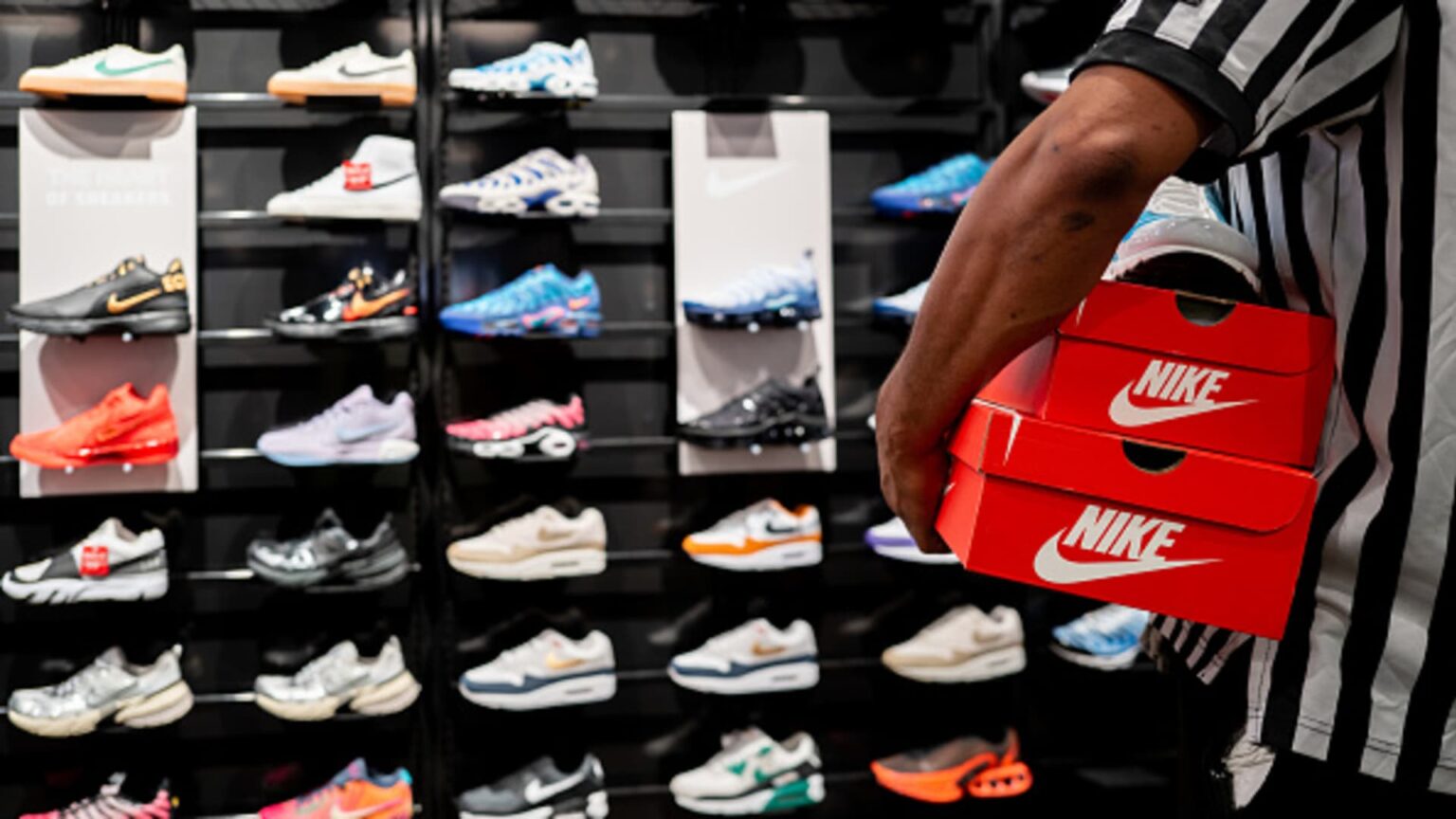Nike on Tuesday said it was postponing its investor day as it delivered mixed fiscal first-quarter results and gears up for a new CEO to take the helm.
Last month, the company announced that CEO John Donahoe would be stepping down in October and replaced with longtime company veteran Elliott Hill, effective Oct. 14. Given the impending CEO change, the company said in a news release that it will “address its approach to guidance” on its conference call.
“Our teams are energized as Elliott Hill returns to lead NIKE’s next stage of growth,” Nike finance chief Matt Friend said in a news release.
“NIKE’s first quarter results largely met our expectations. A comeback at this scale takes time, but we see early wins,” he said.
When reporting fiscal fourth quarter results in June, Nike cut its guidance for fiscal 2025 and said it was expecting sales to be down mid-single digits after it previously expected them to grow.
Its investor day, originally scheduled for November, will be postponed, it said in a news release Tuesday. It’s unclear when the meeting will be rescheduled.
Shares fell about 3% in extended trading.
Here’s how the world’s largest sneaker retailer performed compared with what Wall Street was anticipating, based on a survey of analysts by LSEG:
- Earnings per share: 70 cents vs 52 cents
- Revenue: $11.59 billion vs $11.65 billion
The company’s reported net income for the three-month period that ended August 31 was $1.05 billion, or 70 cents per share, compared with $1.45 billion, or 94 cents per share, a year earlier.
Nike beat earnings expectations by 18 cents, but it fell short on revenue as it works to fix its product assortment and rework its approach to innovation.
Sales dropped to $11.59 billion, down about 10% from $12.94 billion a year earlier.
Nike’s gross margin grew by 1.2 percentage points in the quarter to 45.4%, higher than the 44.4% that StreetAccount analysts had expected. Still, profits fell by nearly 28% during the quarter.
Innovation
Over the last year, Nike has been accused of falling behind on innovation and ceding share to competitors as it focused on selling directly to consumers through its own websites and stores rather than through wholesalers such as Foot Locker and DSW.
At first, the strategy was a boon to Nike’s profits and sales during the Covid pandemic, but as it scaled, it got more complex and consumers started returning to stores and other in-person activities.
During the quarter, Nike Direct sales were down 13% to $4.7 billion.
Under Donahoe’s leadership, the company grew annual sales by more than 31%, but it got there by churning out legacy franchises such as Air Force 1s, Dunks and Air Jordan 1s — not the groundbreaking styles that turned the company into a global powerhouse.
Over the last few quarters, Donahoe has spoken about the need to improve innovation and mend Nike’s relationships with wholesalers, but the company’s board decided that Hill, who spent 32 years with Nike before retiring in 2020, would be the right person to lead its next chapter.
Hill is known to be well-regarded among Nike’s retail partners, when he takes over later this month, he’ll have work to do to rebuild those relationships.
Wholesalers have previously spoken out about Nike’s product lineup and how the same old recycled franchises weren’t doing enough to drive sales. They’ve also been working to keep their own inventories in line and have been careful about ordering too much product.
Nike’s fiscal first-quarter wholesale revenue was down 8% to $6.4 billion.
Hill will also need to power up Nike’s innovation pipeline and improve morale after a series of layoffs and a breakdown in culture.
Overall, the sneaker market has been relatively stagnant in the U.S. Consumer spending on discretionary goods such as new clothes and shoes has been sluggish, which has made Nike’s situation that much more difficult.
Footwear sales in the U.S. are projected to grow by just 2% in 2024 compared with 2023 after barely budging between 2022 and 2023, according to Euromonitor. Athletic footwear is expected to grow by about 5.6%, the firm said.
During the most recent quarter, Nike footwear sales in North America were down 14%, and apparel sales fell 10%.
Converse, which Nike acquired in 2003, is also weighing down the company’s overall performance. Sales fell 15% to $501 million during the quarter but performed better than the $493 million that analysts had expected, according to StreetAccount.
China
Nike’s performance has also been weighed down by the uneven economy in China, Nike’s third-largest market by revenue. Nike’s performance in China is often an indicator of the region’s financial health, and in late June, it warned of a “softer outlook” in the region.
During its fiscal first quarter, Nike posted $1.67 billion in revenue in the region, slightly above the $1.62 billion that analysts had expected, according to StreetAccount.
China’s central bank recently unveiled its largest stimulus measures since the Covid pandemic, which is expected to give the region’s economy a much-needed boost.
Nike’s fiscal first quarter concluded prior to those stimulus measures, but executives may share color on how sales are performing during the current period.
Shares of Nike closed at $89.13 on Tuesday, down about 18% so far in 2024, significantly underperforming the S&P 500’s gains of about 20%.
Read the full article here

